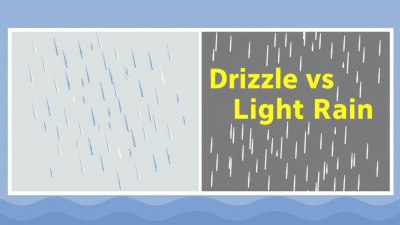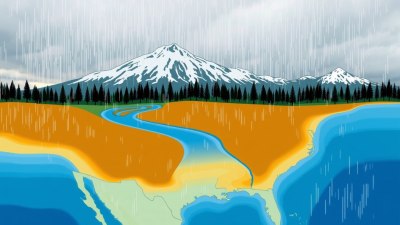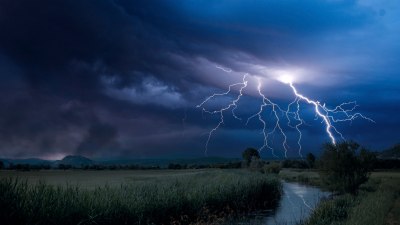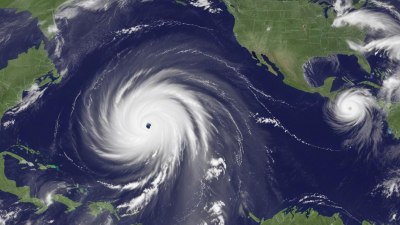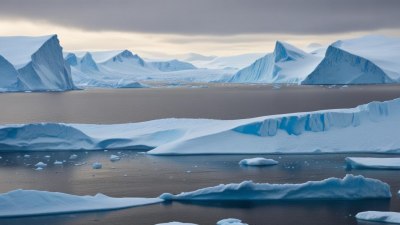How the Ocean Affects Weather
Explore the intricate relationship between oceanic conditions and weather patterns, including effects on climate.

This image was created with the assistance of Freepik
The ocean plays a pivotal role in shaping weather patterns around the world. Understanding how these vast bodies of water influence atmospheric conditions is essential for predicting weather and mitigating climate impacts. This article delves into the various mechanisms through which the ocean affects weather, including ocean currents, temperature variations, and interactions with the atmosphere.
1. Ocean Currents and Weather Patterns
Ocean currents are large-scale movements of seawater driven by factors such as wind, salinity differences, and the Earth's rotation. These currents distribute heat across the planet and have a significant influence on regional climates. For example, the Gulf Stream, an ocean current in the Atlantic Ocean, carries warm water from the tropics to the North Atlantic, impacting weather in Europe by creating milder winters.
Conversely, cold currents, such as the California Current, can lead to cooler and drier conditions in coastal regions. The interaction between ocean currents and atmospheric systems is crucial for the formation of weather patterns such as hurricanes and monsoons, which depend on warm ocean waters to gain strength.
2. Temperature Variations and Climate Influence
Sea surface temperatures (SST) have a profound effect on weather systems. When ocean temperatures rise, they can alter atmospheric conditions, leading to increased evaporation rates. This process generates more moisture in the atmosphere, which can result in stronger storms and rainfall. El Niño and La Niña are prominent examples of how variations in ocean temperatures can lead to significant changes in weather around the globe.
During an El Niño event, warmer than average SSTs in the central and eastern Pacific Ocean can cause shifts in jet streams, leading to increased precipitation in some regions and droughts in others. La Niña, characterized by cooler SSTs, often has the opposite effect, promoting dry conditions in certain areas while increasing rainfall in others.
3. Ocean-Atmosphere Interactions
The interaction between the ocean and atmosphere is a complex process, often mediated by phenomena such as the oceanic heat flux. This heat exchange influences weather systems, particularly in tropical regions where warm waters lead to the formation of tropical storms. The transfer of heat from the ocean to the atmosphere results in the development of convection currents, which are essential for cloud formation and precipitation.
These interactions can result in feedback loops where atmospheric conditions further impact ocean behavior. For instance, changes in wind patterns can lead to altered currents and temperatures, creating a climatic feedback mechanism that can enhance or disrupt existing weather patterns.
4. The Role of Ocean Upwelling
Upwelling is another significant process where nutrient-rich waters from the depths of the ocean rise to the surface. This phenomenon occurs primarily along coastlines and can have substantial effects on local weather and ecosystems. Upwelling zones tend to have lower sea surface temperatures, which can stabilize the atmosphere and lead to less convection and, consequently, less precipitation.
The cooling effect of upwelling also influences marine ecosystems, promoting marine life that can impact coastal weather patterns. For example, the presence of phytoplankton in upwelling areas can impact cloud formation and local weather, proving the interconnectedness of ocean health and atmospheric conditions.
5. Salinity and Its Impact on Weather
Salinity levels in the ocean also play a role in weather management. Variations in salinity, often due to freshwater input from rivers or melting ice, can affect ocean density and currents. Changes in density can alter the way water moves, impacting overall climate patterns. Salinity fluctuations can also lead to the formation of various weather phenomena, including the intensification of storms or the modulation of existing weather systems.
The interplay between salinity and temperature can lead to significant differences in ocean stratification, impacting everything from marine ecosystems to atmospheric dynamics. Scientists study these parameters closely to better understand their role in climate change and weather forecasting.
6. Oceanic Events and Global Weather Patterns
Exceptional oceanic phenomena such as the Atlantic Meridional Overturning Circulation (AMOC) are crucial for global weather. The AMOC is responsible for transporting warm waters northward and cold deep waters southward. Disruptions to this circulation can lead to drastic shifts in regional and global climates, affecting weather patterns across the globe.
Variability in the AMOC has been linked to significant weather events, including changes in monsoon patterns in Africa and alterations in storm tracks in North America and Europe. Understanding the behavior of these complex ocean currents helps meteorologists predict long-term climate trends as well as immediate weather changes.
7. The Impact of Climate Change on Ocean-Weather Interactions
Climate change is causing unprecedented shifts in both oceanic conditions and weather patterns. Rising global temperatures are leading to higher SSTs, with cascading effects on atmospheric behavior. Moreover, the melting polar ice caps are altering ocean salinity and circulation, impacting sea levels and weather systems globally.
As the ocean absorbs a significant amount of the excess heat from global warming, it plays a critical role in climate regulation. However, this also means that changes in ocean health can lead to increased frequency and intensity of extreme weather events, such as hurricanes, droughts, and floods, impacting human populations and ecosystems.
8. The Ocean's Influence on Weather
The ocean and atmosphere are intricately linked, with each influencing the other through a multitude of processes. Ocean currents, temperature variations, and salinity shifts all play vital roles in weather patterns and climate dynamics. As our understanding of these interactions deepens, we gain valuable insights into predicting weather trends and preparing for the impacts of climate change. The future of weather forecasting will increasingly rely on comprehensive models that account for the ocean's pivotal role in shaping our climate.
